






 |
|||||||
 |
 |
 |
 |
 |
|||
 |
|||||||
|
Radu Tarta "Shiny Eyes" Single Ended 71a-C3m The Type 71a is a tube that I’ve been fascinated with for quite some time. Having owned one example of the 71a in the past, when I eventually sold it I promised myself that I would one day go for a no-holds-barred amplifier based around this tiny, ancient triode. When finances finally caught up with desire, I turned to Radu Tarta of Simple Pleasure Tube Amps. and asked if he could make me a custom version of one of his beautiful two-stage single ended amplifiers using the 71a tube. Radu took up the challenge and produced this incredible amp in a few quick weeks. A bit of background about the 71a: It's one of the earliest of the triodes, and was used as the power tube in millions of radios from the mid to late 1920’s. As a power tube, it makes a lowly ¾ of 1 watt of power. It was made by just about every tube vendor in the business in the 20’s, and was available in globes until 1930, and then as an ST tube well into the 1940s. This is one of the best sounding but most mysterious of the triodes, and its low power makes it a non-starter for most everyone. Back to this amplifier: I had a set of the superb, freshly-harvested 1960’s Tamradio/Tamura power and output transformers on hand, and together Radu and I worked out a list of other quality parts including NOS James Millen tube sockets, Simpson and Texas Instruments panel meters, TKD volume control, Rod Coleman filament supplies, Clarity caps, a MIL spec Amphenol connector for the umbilical, 5 inch solid Mahogany bases, Radu’s custom drilled aluminum top plates, and the list goes on. Like the newer Yamamoto and Sean Casper amplifiers, I wanted to use the C3m driver for this amplifier and Radu was able to make that work, as well as my preference for the 80 rectifier. He was even able to make the 80 interchangeable with the 274b, another of my favorites. In short, this is a masterfully produced top-shelf single ended amplifier with a mix of the best vintage and high quality modern parts, providing everything the little 71a needs to shine. The result is a simply gorgeous one-of-a-kind creation that is certainly one of the coolest items I’ve ever owned. With power supply and output stages physically separated, the delicate and sensitive power and driver tubes receive no noise from the power section and this amplifier is dead quiet. There is no noise of any kind at idle. Playing music, the sound is clean and crisp with a lot of air and sparkle. Imaging and space are superb, with big and easily definable placement of performers and movement. This is not a heavy-handed thick presentation, its much more ephemeral and “elvish”. If I had to compare the fidelity of the 71a in this circuit to another triode it sounds most like a combination of a 45 and type 10. At ¾ watt this amplifier requires easy to drive, nicely efficient speakers. With my crossoverless 96 db/wm Zenith panels and using only the onboard TKD attenuator, the 71a is able to play pretty damn loud, certainly loud enough for my taste, and without sounding distorted or clipped. But the special thing abut the 71a, and one of the reasons I’ve been interested in it for so long, is that the tube enters its sweet spot fairly low on the volume dial. Most amps take a bit of volume to get to the place where you can really see into the music, but with the 71a that spot seems to be at a fairly low volume, meaning the amp is bringing out the details and image while still low enough in volume to not overwhelm a conversation. My wife and I often spend an hour or more in the evenings in my listening room talking and enjoying a glass of wine, and with this amplifier I can hear all of the audiophile stuff while still hearing my wife! The 71a is definitely an outlier. It's a tube that went out of fashion 90 years ago. Like all of these ancient triodes, it was never fully appreciated in its day, when existing technology limited “hifi” to only a narrow midrange and not much more. But these little miracles are so musical sounding! With the right speakers and room, these micro-output triodes offer some of the most satisfying musical reproduction ever created. Hopefully one day more builders will experiment with this tube and bring it back into the mainstream. Until then, an amp like Radu’s creation remains a nearly lone ambassador for this exotic species. |
||||||||
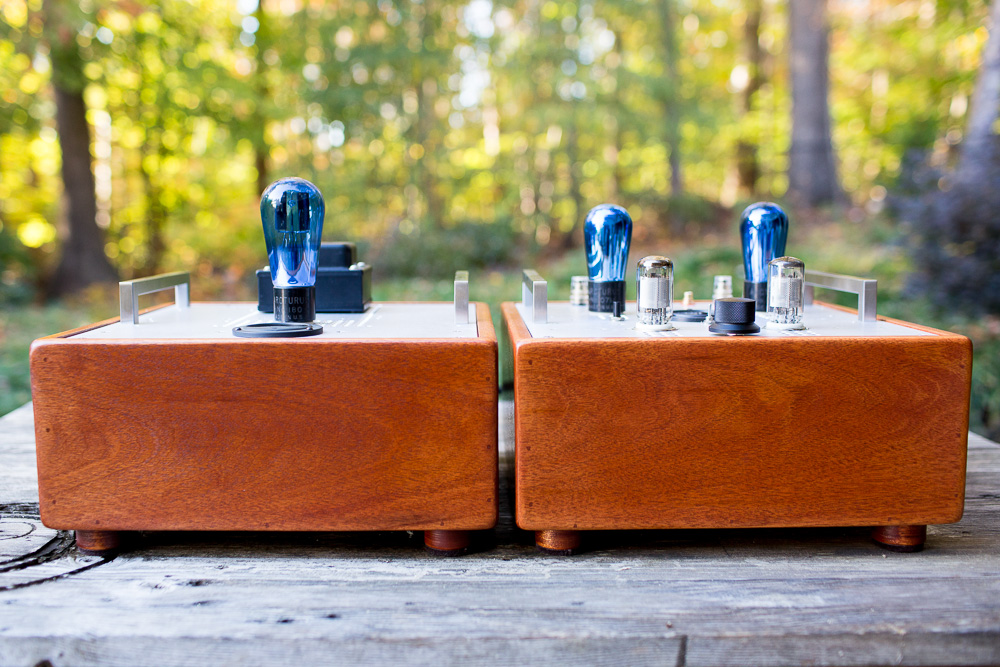
|
||||||||
|
I loved the aesthetics of Radu’s amplifiers the moment I first saw them years ago. Look at the way he matched the flowing grain of the Mahogany on the front panels. I had these bases made a bit taller than Radu’s normal amplifiers, in imitation of 1920’s radio equipment. |
||||||||
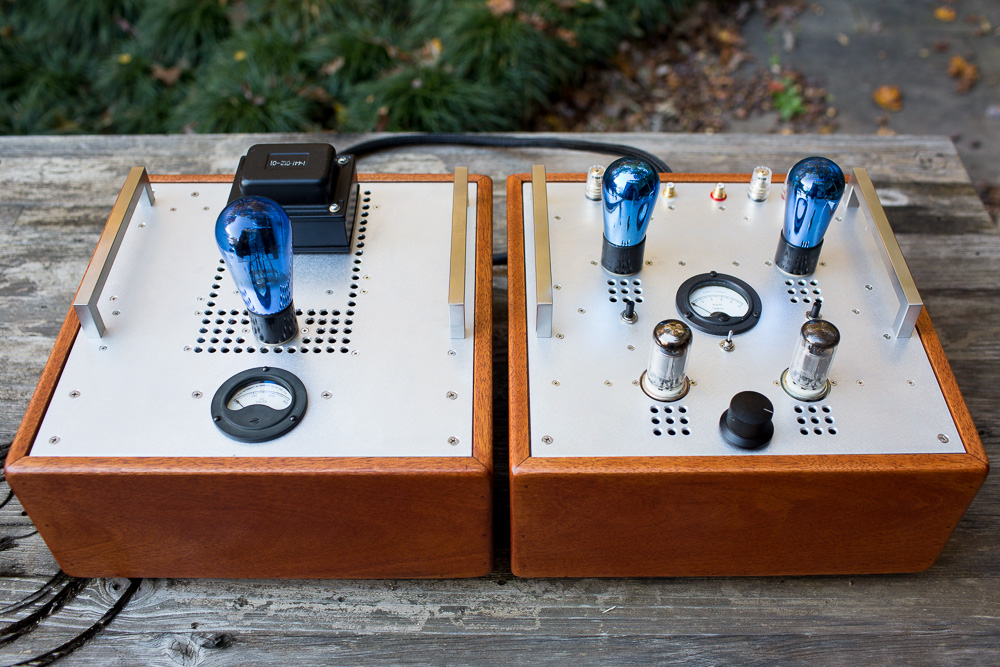
|
||||||||
|
I think the drilled patterns in the top plates really call up the art deco style that defined the 1920's. The panel meter on the power block shows the rectifier tube's voltage. On the output section the switch and panel meter allow individual adjustment of the filament voltage to precisely 5V. This will prolong the life of the 71as, and is really helpful with 90 year old tubes! |
||||||||
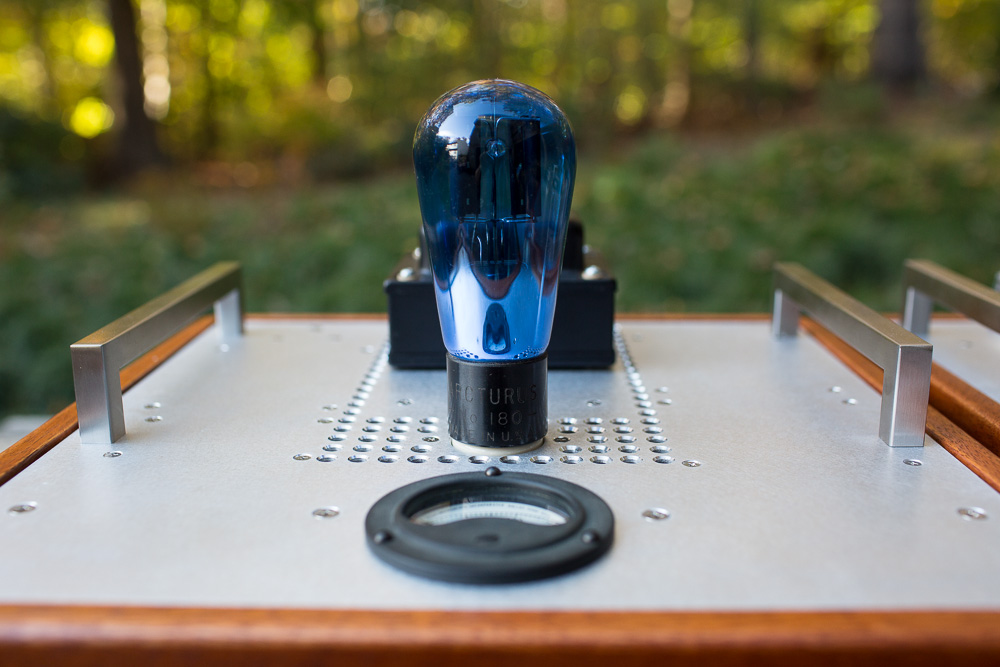
|
||||||||
|
The 80 Globe is one of my all time favorite tubes, and the Arcturus example here has served me well for years now, 90 years after being made. I was very pleased that we were able to use the 80 here, as its of the same era as the 71a. |
||||||||
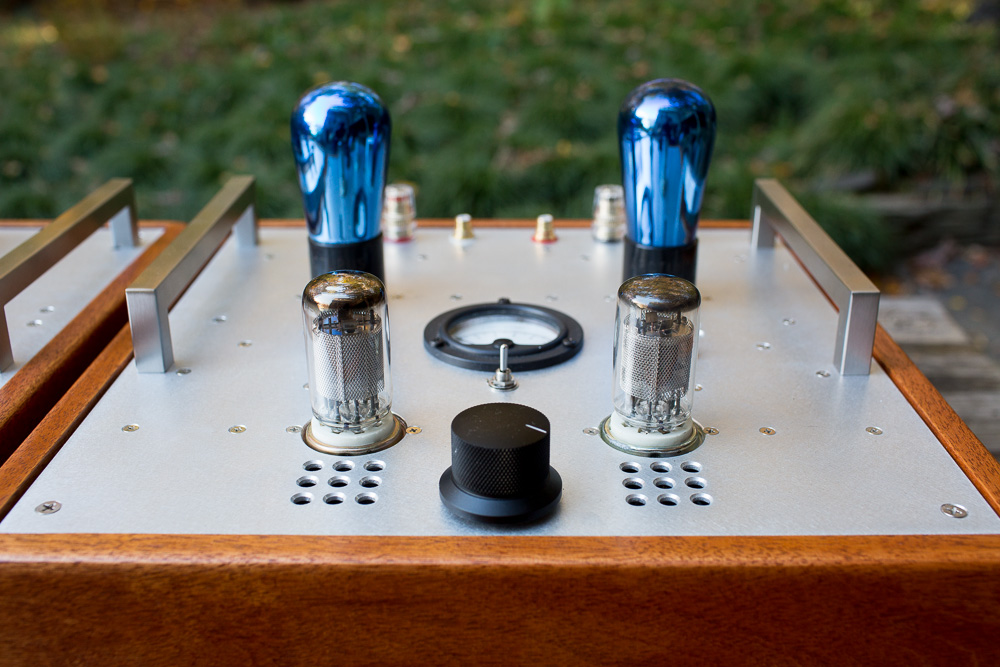
|
||||||||

|
||||||||
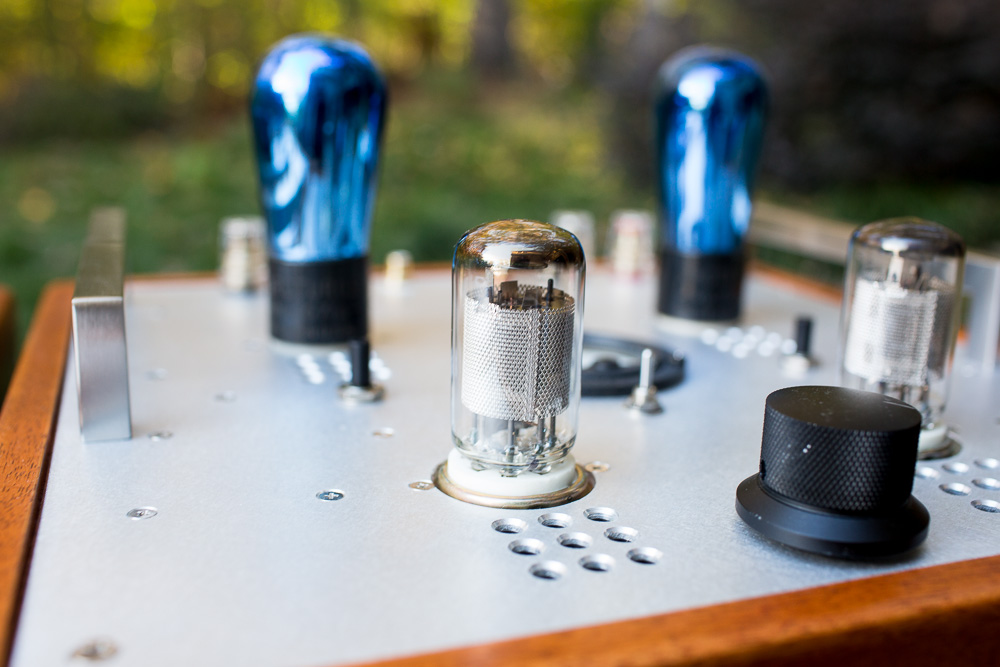
|
||||||||
|
The C3m is a superb driver tube, maybe an ultimate driver tube. Love the mesh plates! |
||||||||
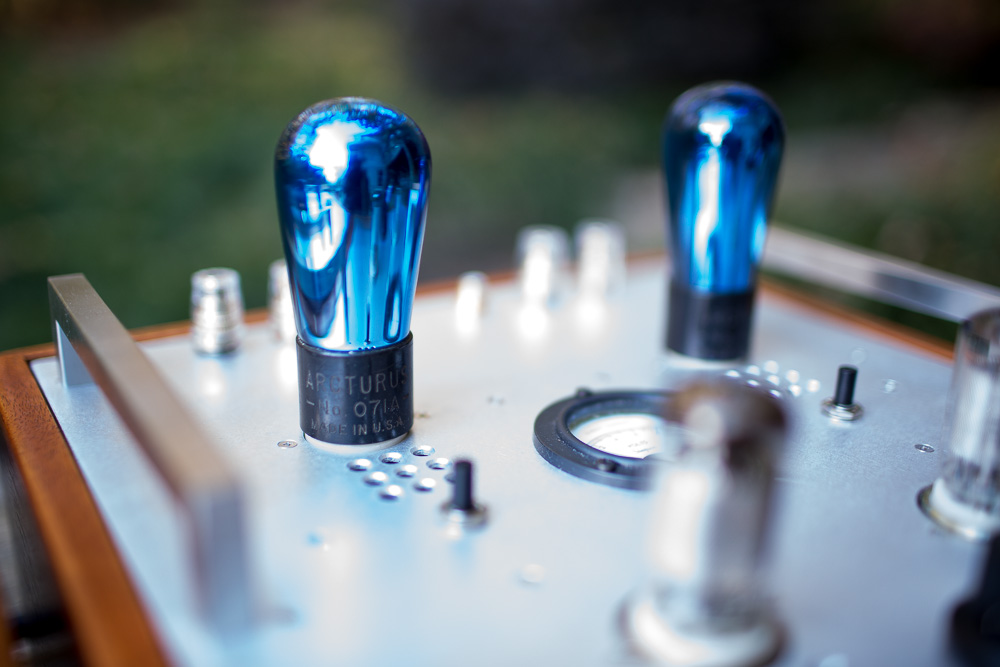
|
||||||||
|
The star of the show, the No. 071a. Here it is as late-1920's Arcturus globes in the lovely blue glass, one of the many varieties of this tube still out there in the wild. In the 1920's millions of 71a tubed radios were made, and although it had a relatively short life-cycle in the radio market the 71a was in production until the 1940's because so many early radios used them. In comparison to its bigger brothers the 45 and 50, the 71a is still quite a bargain, especially in light of its superb fidelity. The 71a is low power for sure, but the small bit of power it does make is some of the most desireable ever created. |
||||||||
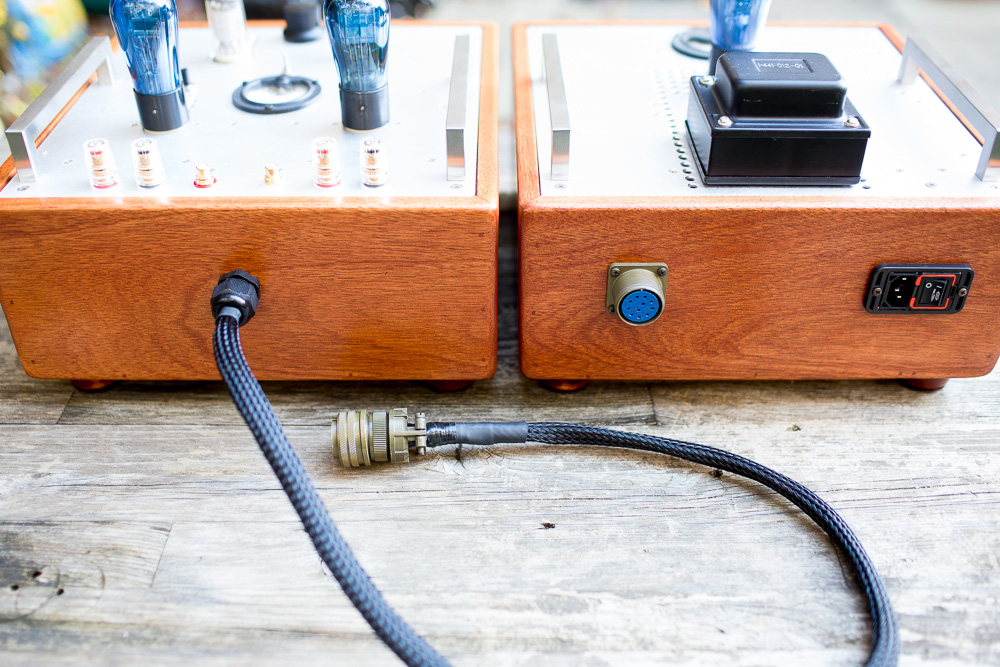
|
||||||||
|
Radu often designs amplifiers with seperated power supply for low noise. Here, the power section is connected to the output section via a 3 foot umbillical connected with a vintage MIL spec Amphenol threaded connector. This ensures the very sensitive power tubes arent picking up noise from the power supply. Its elaborate but quite effective. |
||||||||
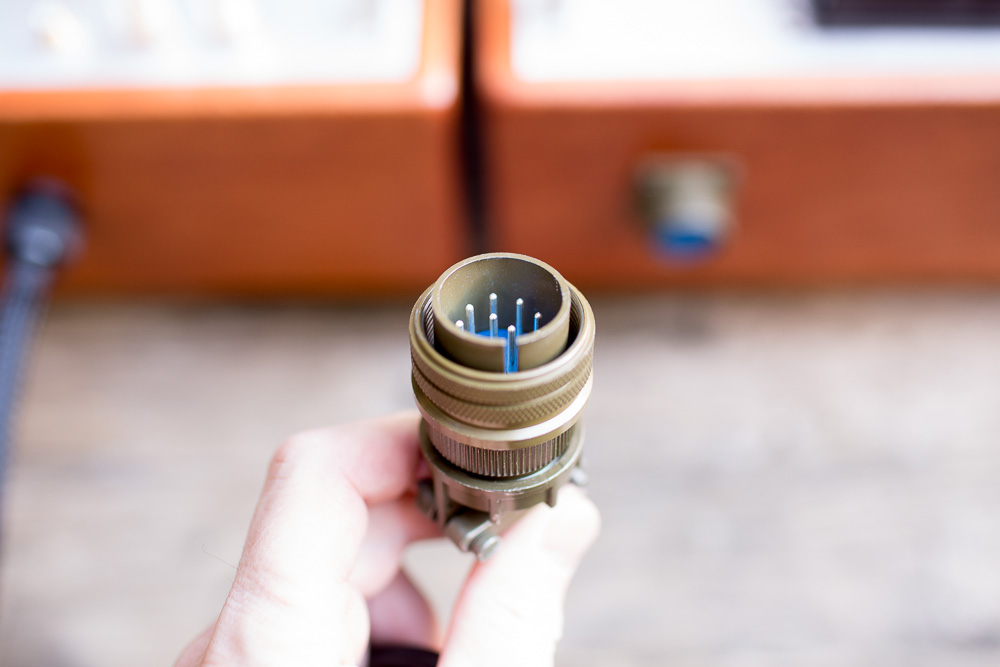
|
||||||||

|
||||||||
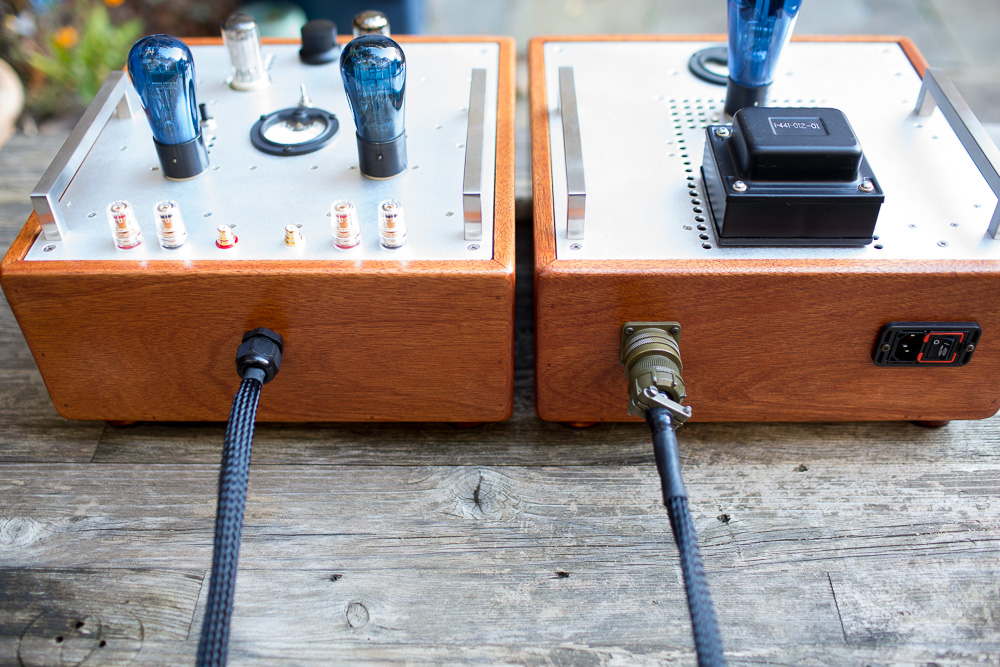
|
||||||||

|
||||||||
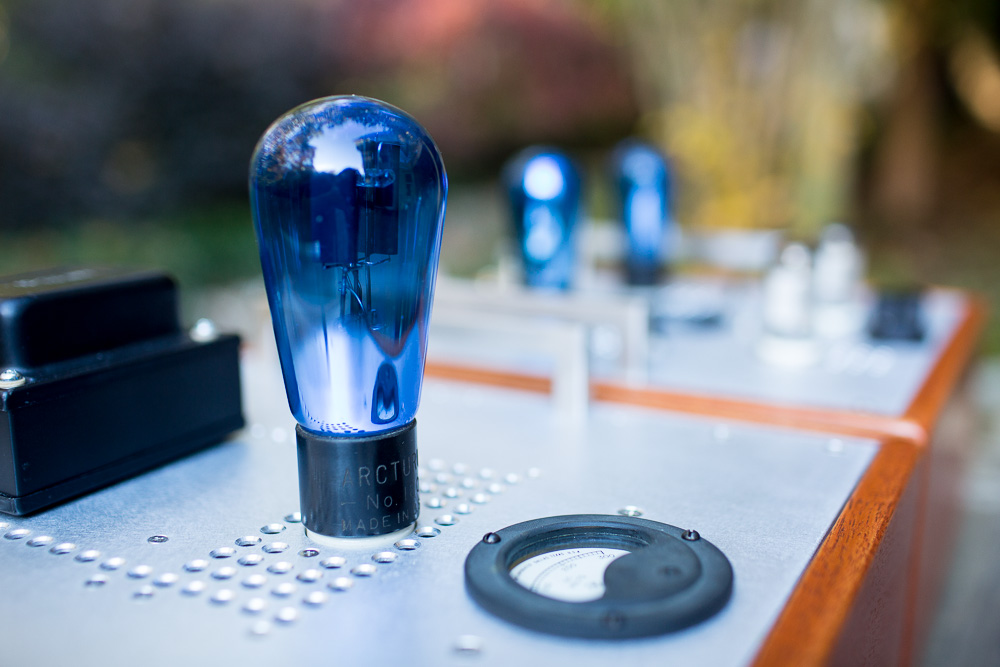
|
||||||||

|
||||||||
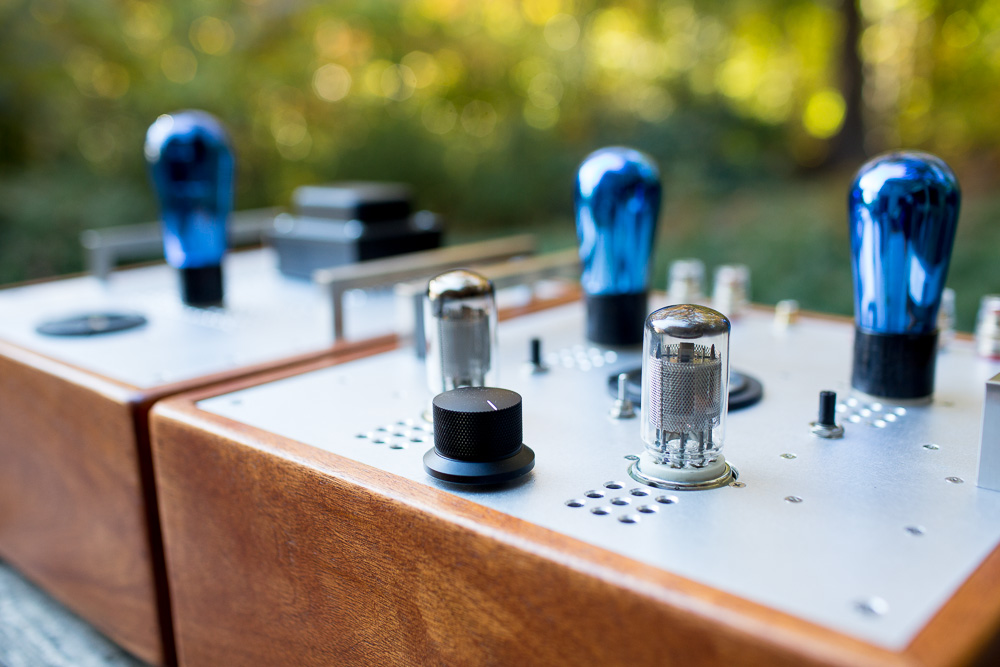
|
||||||||
|
I like amplifiers with volume controls built in. Its just makes it easier to hear the amp itslef, it eliminates a second set of interconnects in the signal chain, and I've found that 8 times out of 10 the amplifier sounds better all by itslef, without a preamp of any kind, regardless of price. None is sometimes more. In this case, the volume is controlled by a superb TKD attenuator. What a pleasure to use. |
||||||||
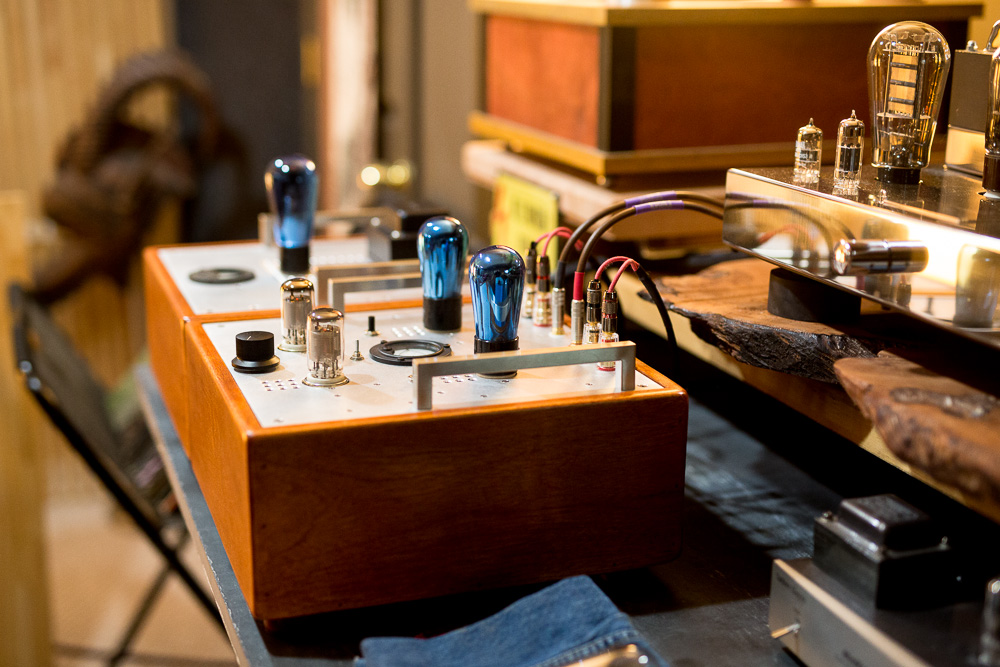
|
||||||||

|
||||||||
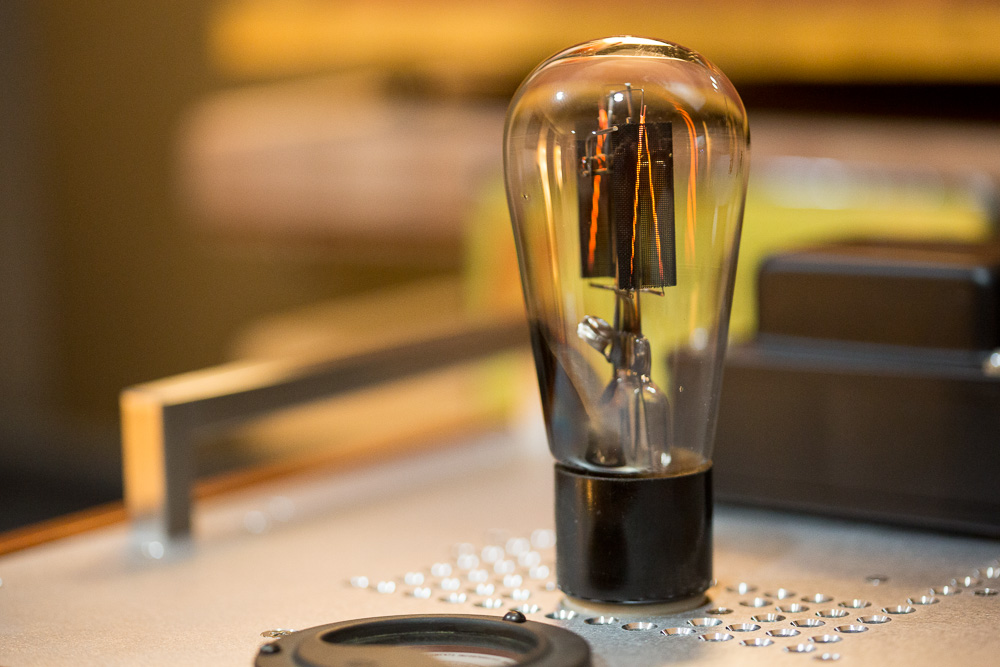
|
||||||||
|
Talk about a rarity! Here is an 80 globe with mesh plates. This tube was made by Cardon (a division of Sparton) in probably 1928 or 1929. Look at the filaments glowing from within the plates. Sparton/Cardon made some strange proprietary tubes for their radios, and they seem to be the only company to ever make a mesh 80. |
||||||||
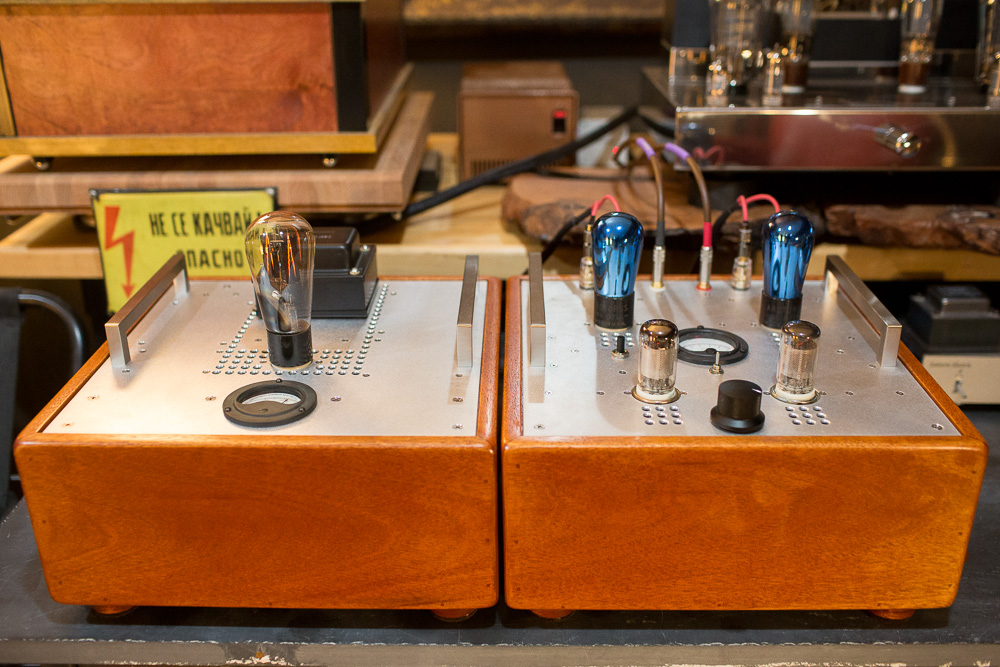
|
||||||||
|
The 71a is not for everyone. Radu himself declared it an audiophile amplifier, and I couldn’t agree more. This is an amplifier that certainly demands efficiency in speakers, but 95 db/wm gets you almost all of the way there. More than enough for reasonable listening levels. Notice in the photo above that the volume is at 5 o'clock or so. That’s 90 percent of what this amp can push out. At that level on my 96ish db/wm panels this equals too loud to comfortably talk over, so it does its job. But the 71a has a unique signature that is extremely pleasing, serving up details, space and ambiance that project into the room, even at very low volume, which is a trick that is somewhat more uncommon. Most amps tend to die out a bit at lower listening levels. Not the 71a. Although it can play loud on the right speakers, it hits its sweet spot lower on the volume scale than most and that makes it such a great choice for late evening critical listening. |
 |
|||||||
 |
 |
 |
 |
 |
|||
 |
|||||||
 |
|||||||